I’ve come to realize, through my travels, that my curiosities are insatiable. The more I learn about the world, the more I realize I don’t know.
Perhaps a man should travel at least enough to become aware of his own ignorance.
My fascination with World War II, The Cold War & Communism, keeps growing with each European trip. And even though “my cup’s not runneth over,” I’ll share what I’ve learned to make room in my grey matter—same way I learned flawless usage of Hebrew Bible quotes.
Since I travel a lot, I’m often asked, “Man, what’s your favorite place?” The question always serves as a reminder never to ask the guy wearing an arm cast, “What happened?”
I indulge my inquisitor: “Ooh tough to say, I like Budapest.” So they can say, “Why Budapest?”
I say, “It’s beautiful, lots of history and architecture. They call it ‘Paris of the East!”
But I’m changing my answer. My favorite place is Prague. It’s the European city where I’ve lingered longest for good reason.
Prague feels magical. Its baroque buildings and Gothic churches are some of the most magnificent architecture in Europe. To visit Prague is like entering a fairy tale.
I first visited the Old Town for my 35th birthday. It so captivated me that I’ve been back a half-dozen times since 2015.
My Favorite Thing to do in Prague
My favorite thing to do in Prague is get coffee “to take-away” (as they say), then go for long, leisurely walks down Staré Mesto in Old Town, cross the Vltava River on Charles Bridge (est. 1357) to Malá Strana (the Lesser Quarter), then head up the winding cobblestone streets to Prague Castle (est. 1344).
When crowds are small in the early morning, I like to take pictures of old statues with St. Vitus Cathedral in the background.
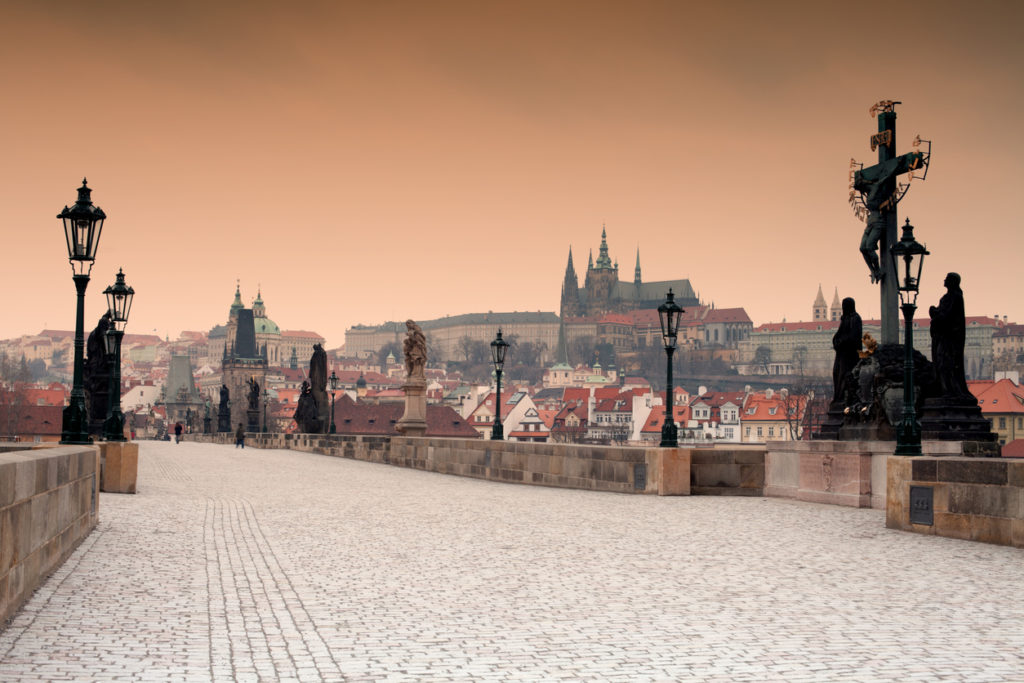
St. Vitus Cathedral (est. 1344) is located entirely within Prague Castle. It’s an awesome example of Gothic Architecture, and the most important Roman Catholic Church in Czech Republic.
Hotel rooms with prominent views of the castle fill up quickly, so it’s best to book them well in advance.
Breakfast in a cafe near the Astronomical Clock is a great way to start a day. The world-famous 608-year old clock is closed for renovations at time of writing, but you can still climb to the top for amazing views of Old Town Square.
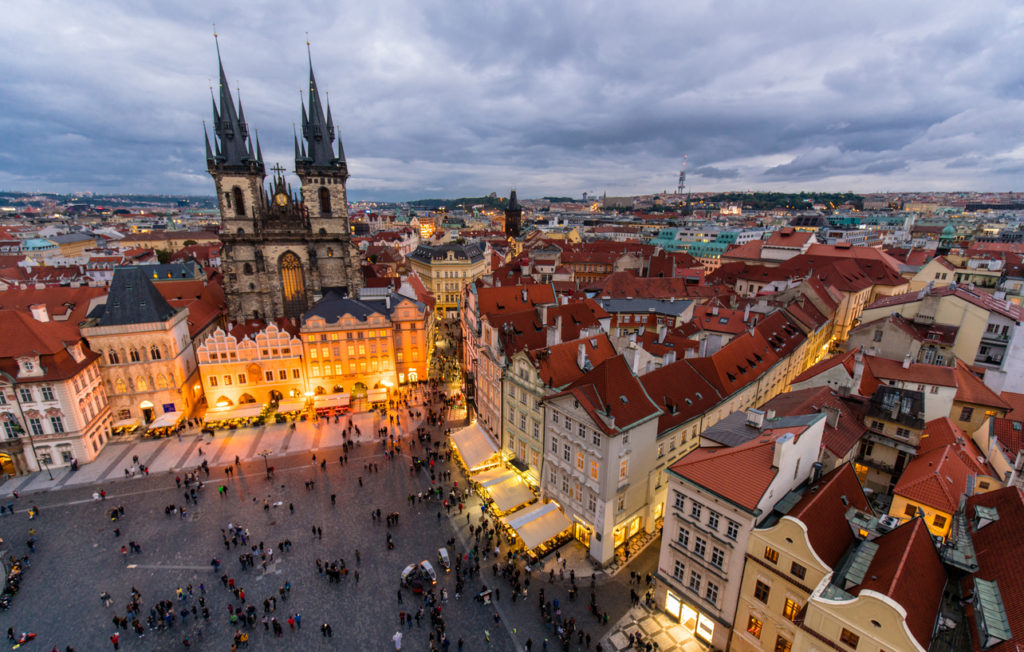
The best time of year to visit Prague is in warmer months (March – October), or the outer edges of winter (early November or late February) to avoid crowds. I visited under snowfall this year, which was beautiful—there’s not a bad time to visit Prague.
Recommended Day Trips from Prague:
- Český Krumlov – referred to as the Renaissance and Baroque jewel of Central Europe; it’s listed by UNESCO as a World Cultural Heritage Site.
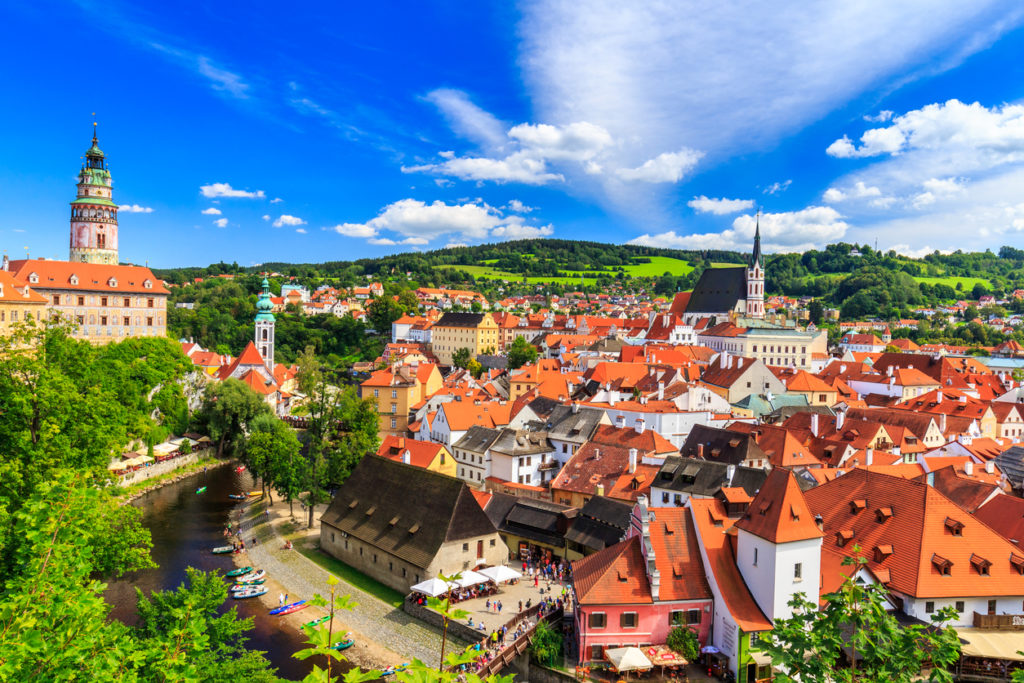
- Terezin – the largest concentration camp in Czech Republic
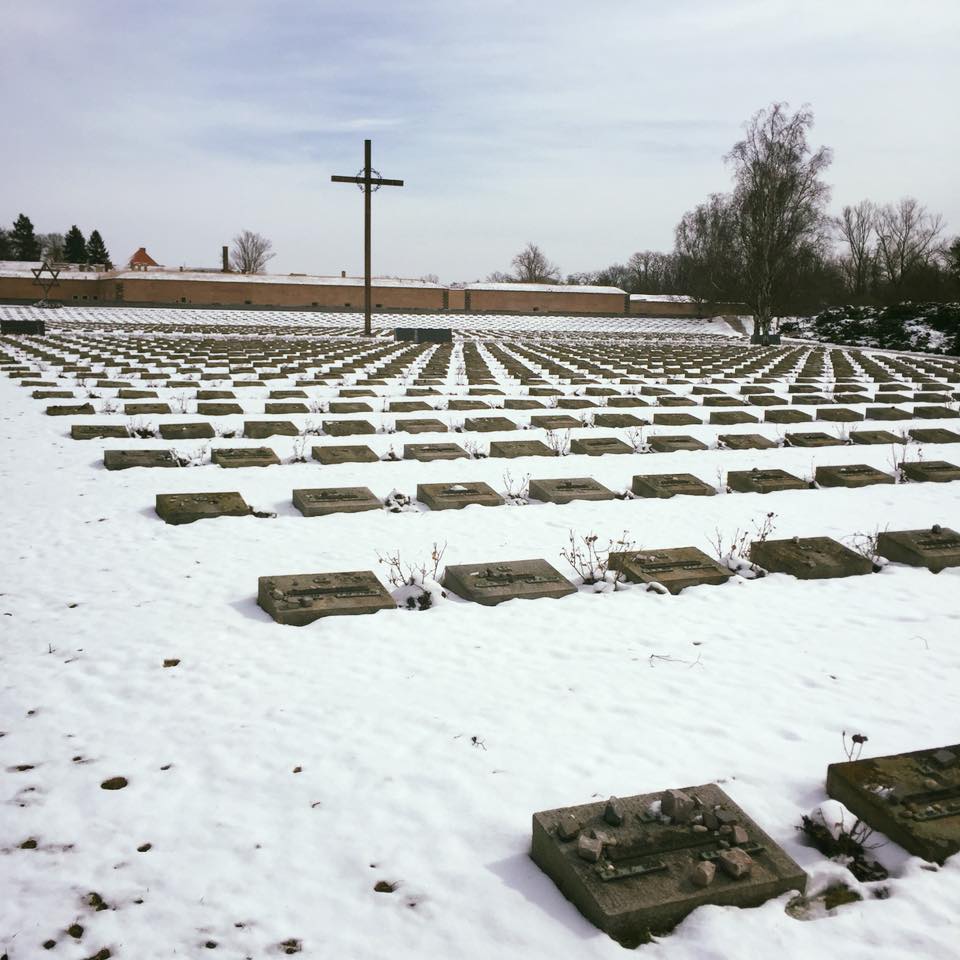
Life Under Communism in Prague
Prague has lots of World War II & Communist history. I like to engage town elders in discussions about their lived experience, then fill-in gaps walking through the Jewish Quarter & Communism Museum (its theme is: “Communism – The Dream, The Reality, and The Nightmare”).
The Jewish Quarter is a reminder of the horrors Jews experienced during World War II. Hitler preserved the area because he wanted it to be a museum to the lost Jewish race.
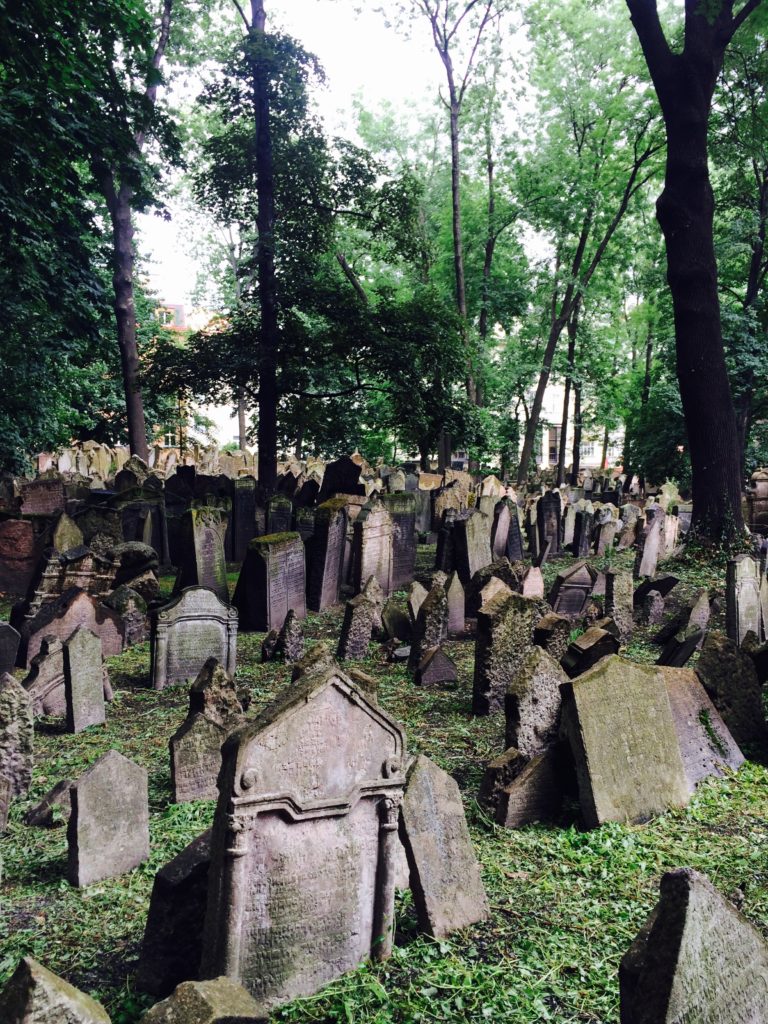
Czechoslovakia was independent between the Austro-Hungarian Empire (1918) and Nazi invasion in 1938. The Soviets “liberated” the country during World War II in 1945.
Soviet leader Josef Stalin viewed Prague as a prize. He thought of Eastern Europe as the spoils of war for losing so many Russian lives defeating the Nazis.
Prague was far from a fairy tale under Communist rule from 1948-1989.
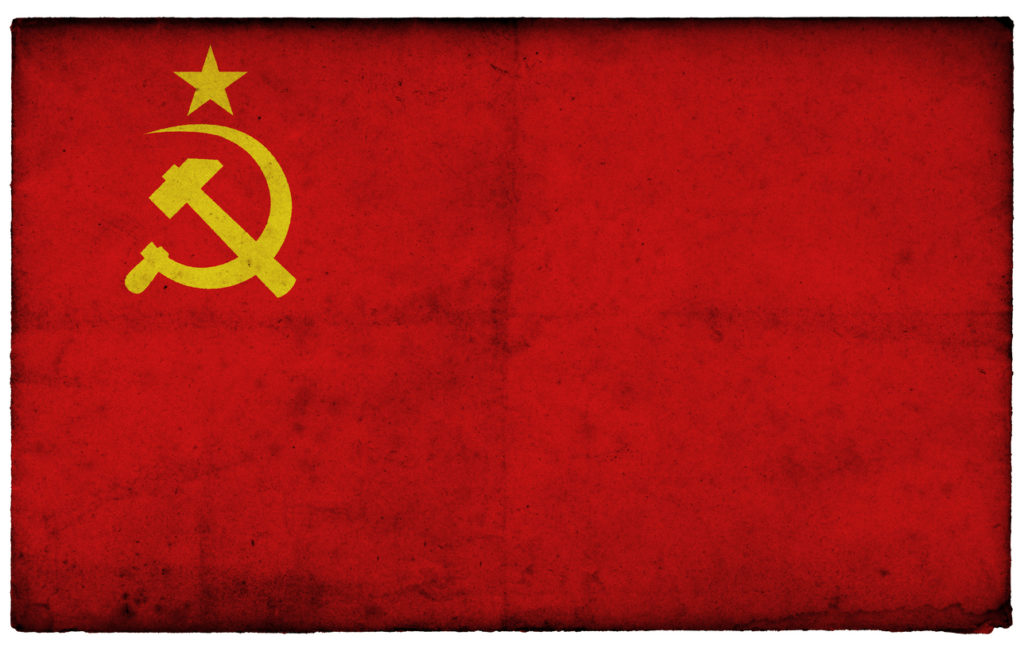
After a planned economy was introduced in Czechoslovakia, the rich were turned poor overnight. 95% of privately-owned companies were nationalized. Many citizens of Prague woke up with bank balances 1/10 of what they were at bedtime. Owners of nice homes were forced out and given accommodation in the countryside.
“From each according to his ability, to each according to his need” – Karl Marx, co-author of The Communist Manifesto
If the government thought a citizen wasn’t complying with the socialist ideal, he could be intimidated, harshly interrogated and possibly surveilled. Bribes were common.
Citizens feared speaking freely even inside their own home because walls were frequently bugged. They had to watch what they said outdoors because they didn’t know who was Secret Police.
According to Aleksandr Solzhenitsyn, author of The Gulag Archipelago, when someone was approached by Secret Police and told, “You’re under arrest,” the usual response was, “What for?”
Those sent to the Gulag were almost never given an explanation.
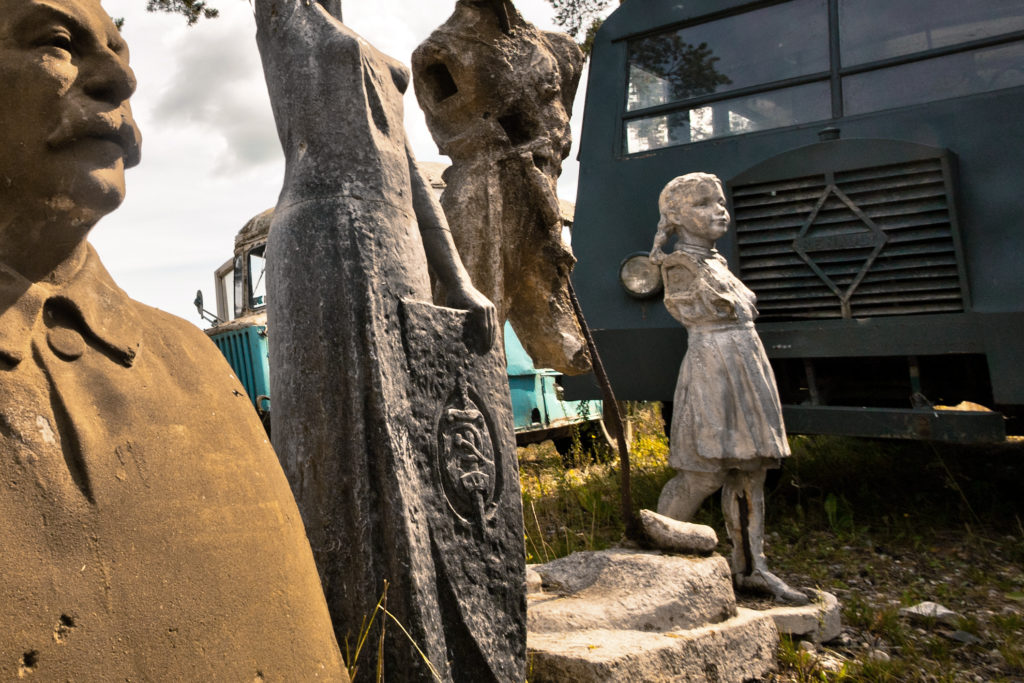
Marxism-Leninism was taught in schools. Students improved their chances of acceptance into higher institutions of learning if they came from working-class families and participated in Communist youth organizations.
The worker in Prague was worshiped and glorified as a hero—the State used them as propaganda. Those deemed good Communists were allowed holidays on the Black Sea in Romania & Bulgaria, but never in the West.
“Communism is the exploitation of the strong by the weak. In Communism, inequality comes from placing mediocrity on a level with excellence.” – Pierre-Joseph Proudhon
Religion was Communism’s biggest target and needed to be eliminated. Catholic priests were accused of spying and sent to prison. Many churches were shut down and ownership was assumed by the State.
There were glimmers of hope for a free press and political independence in Prague during the late 1960s. The freedom movement’s leaders called their plight, “socialism with a human face,” culminating with Prague Spring of 1968.
But freedom for Czechoslovakia was seen as a threat to the Soviet Union, so USSR tanks were sent in to quash Czech citizens’ dreams.
In January 1969, Jan Palach, a philosophy student at Charles University in Prague, hoped to trigger a revolt for Czech independence and burned himself alive in Wenceslas Square.
In March 1969, Czechoslovakia beat Russia in the World Ice Hockey Championships—500,000 Czechs took to the streets in celebrations, some of which turned into violent protests against Soviet military in Prague.
No active protests occurred after 1969.
The Velvet Revolution of 1989 restored democracy in Czechoslovakia, which corresponded with the fall of Communism in Hungary, Poland, Bulgaria and Romania.
One year later, George H.W. Bush became the first United States president to visit Czechoslovakia in its 70-year history. He was welcomed enthusiastically during a time of strong pro-US sentiment in the region. 100,000 people gathered to hear him speak in Prague.
Due to nationalist tensions in Czechoslovakia, the country was divided into Czech Republic & Slovak Republic on January 1, 1993.
One American’s View of Czech Culture
I suspect Czech culture will rapidly change—though I hope not entirely. It’s important to view the country’s culture through the lens of its recent past:
- Under Communism people largely kept to themselves
- There’s a history of invasion and their lands being conquered
- Prague had no Western influence until 30 years ago
Many Europeans believe Americans are “fake happy” and “fake nice.” If you ask a Czech, “How are you?,” it’s frequently met with an eye-roll.
Czechs tend to be grumpy and mostly seem like they’re having a bad day. Smiling and eye contact are not common.
“How can I help you?” isn’t said. Service providers rarely greet you, or get any joy from helping people. With the exception of hotel operators, anonymous courtesies like holding doors isn’t common.
Many young Czechs now study Tourism at university.
Studies have shown correlations in city size and the speed at which people walk (large city = faster walking). Since Prague gets millions of slow-walking tourists every year, it could explain some of the locals’ grumpiness. I’ve also been told loud & drunken Englishmen give tourists a bad name.
Czech Republic hasn’t been infected by the feminist wave that swept through the West, so there’s still strong polarity between the sexes. Women are generally humble and feminine; they aren’t doggedly competing with men. Czech men tend to be masculine.
Other things I’ve learned. As a couple, a man walks into a public building (cafe, bar, restaurant, etc.) first to ensure it’s safe. Also, you shouldn’t call for a waiter, as I did once, and embarrassed a Czech friend of mine. That same friend told me that I walk very upright and confidently, which is seen as boisterous or American bravado.

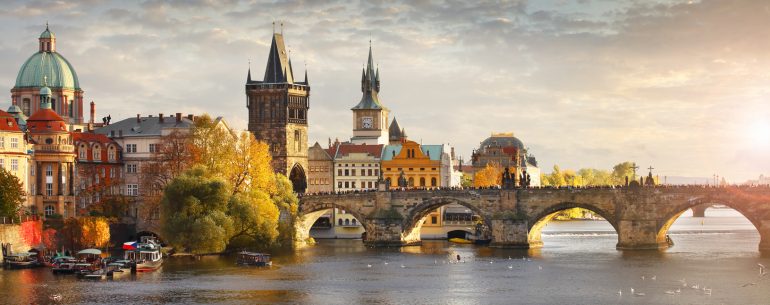
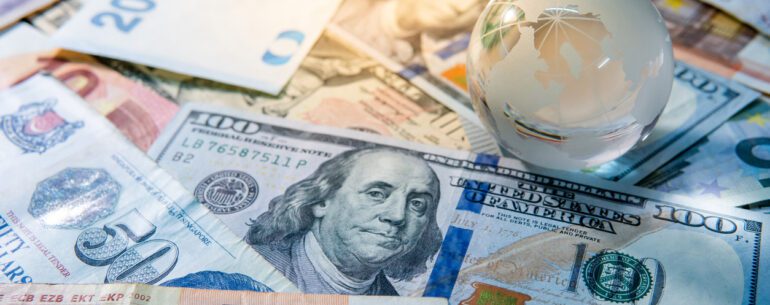
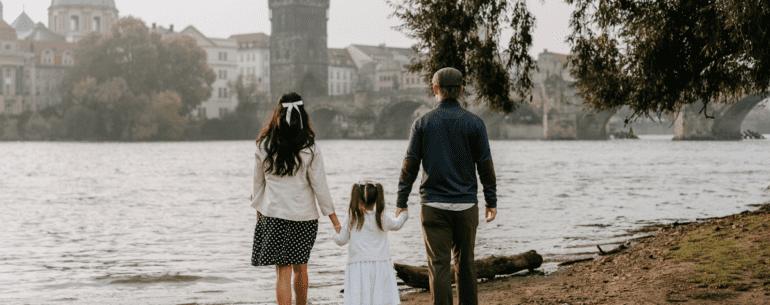
Wow – 12 deep. The German cemetery in Normandy has them three deep and was a dark and depressing place. Very dark, Celtic stone crosses and headstones with little marking and overgrown bushes. It’s a stark contrast to the pristine beauty of the American cemetery at Omaha beach. I, too, love World War II history and appreciate your writing on this! It’s so important also for people to truly understand what Marx espoused. Too many romanticize it and don’t think it through to its logical conclusion in how it affects a society. They tend to do so from the place of their capitalist comfort. There is a reason Marx only got into theory – because that’s the only place it works.
THanks, Victoria. The fact that I’m writing about Communism on what would be Karl Marx’s 200th birthday is a crazy coincidence. The average person knows little about WWII & concentration camps, less about Stalin & the gulag, lesser still about Maoist China, Pol Pot’s Cambodia, Vietnam, North Korea, Venezuela. I agree, proponents of communist doctrine don’t understand its logical conclusion. Communism is by far the leading ideological cause of death (over 100 million people). My experience is those who espouse Marxist views (present-day identity politics advocates) are ignorant of history and/or have no fundamental understanding of human nature. Unfortunately, there’s a ‘useful idiot’ born every day.
As someone born and living in eastern Europe, is interesting to read about our corner of the world, seen from outside.
For my country, Communism ended in 1989 (theoretically) and I was 6 years old then (few memories).
I read some books about Communism(Aleksandr Soljenițîn, local writers) and it is sad…because people are missing that period, they choose to remember only parts of it(parts there were ok,for them).
I’m reading Soljenițîn for the first time now. Glad to have you as a reader, Dori.
Reading about your extraordinary travels is always a pleasure, as you make me feel like I’m there with you. Always good to hear from you.
High praise, thank you!